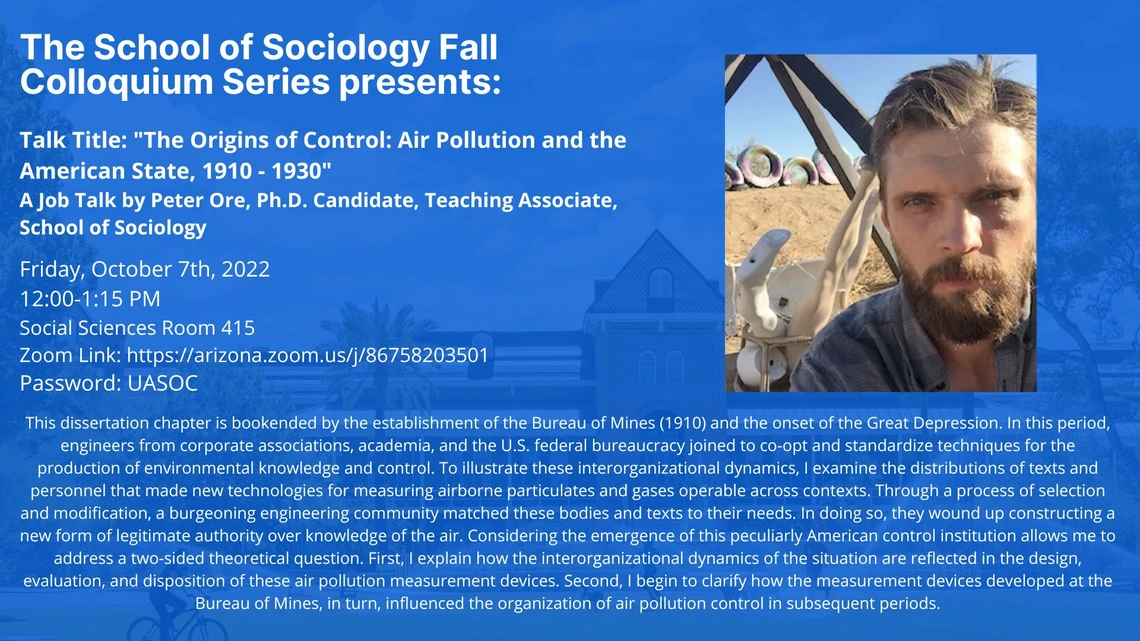
When
The UA School of Sociology is holding a Colloquium Series Job Talk next week on Friday, October 7th from 12:00 - 1:15PM. The speaker will be Peter Ore, Ph.D. Candidate and Teaching Associate with the School of Sociology. His job talk is entitled “The Origins of Control: Air Pollution and the American State, 1910 - 1930.”
The Colloquium will be held in Social Science 415 from 12:00-1:15PM.
Join Zoom Meeting
https://arizona.zoom.us/j/86758203501
Password: UASOC
One tap mobile
+16027530140,,86758203501# US (Phoenix)
+12532158782,,86758203501# US (Tacoma)
Dial by your location
+1 602 753 0140 US (Phoenix)
+1 253 215 8782 US (Tacoma)
+1 346 248 7799 US (Houston)
+1 669 900 6833 US (San Jose)
+1 301 715 8592 US (Washington DC)
+1 312 626 6799 US (Chicago)
+1 646 876 9923 US (New York)
Join by SIP
Meeting ID: 867 5820 3501
Password: 887514
Join by Skype for Business
https://arizona.zoom.us/skype/86758203501
Abstract:
This dissertation chapter is bookended by the establishment of the Bureau of Mines (1910) and the onset of the Great Depression. In this period, engineers from corporate associations, academia, and the U.S. federal bureaucracy joined to co-opt and standardize techniques for the production of environmental knowledge and control. To illustrate these interorganizational dynamics, I examine the distributions of texts and personnel that made new technologies for measuring airborne particulates and gases operable across contexts. Through a process of selection and modification, a burgeoning engineering community matched these bodies and texts to their needs. In doing so, they wound up constructing a new form of legitimate authority over knowledge of the air. Considering the emergence of this peculiarly American control institution allows me to address a two-sided theoretical question. First, I explain how the interorganizational dynamics of the situation are reflected in the design, evaluation, and disposition of these air pollution measurement devices. Second, I begin to clarify how the measurement devices developed at the Bureau of Mines, in turn, influenced the organization of air pollution control in subsequent periods.

